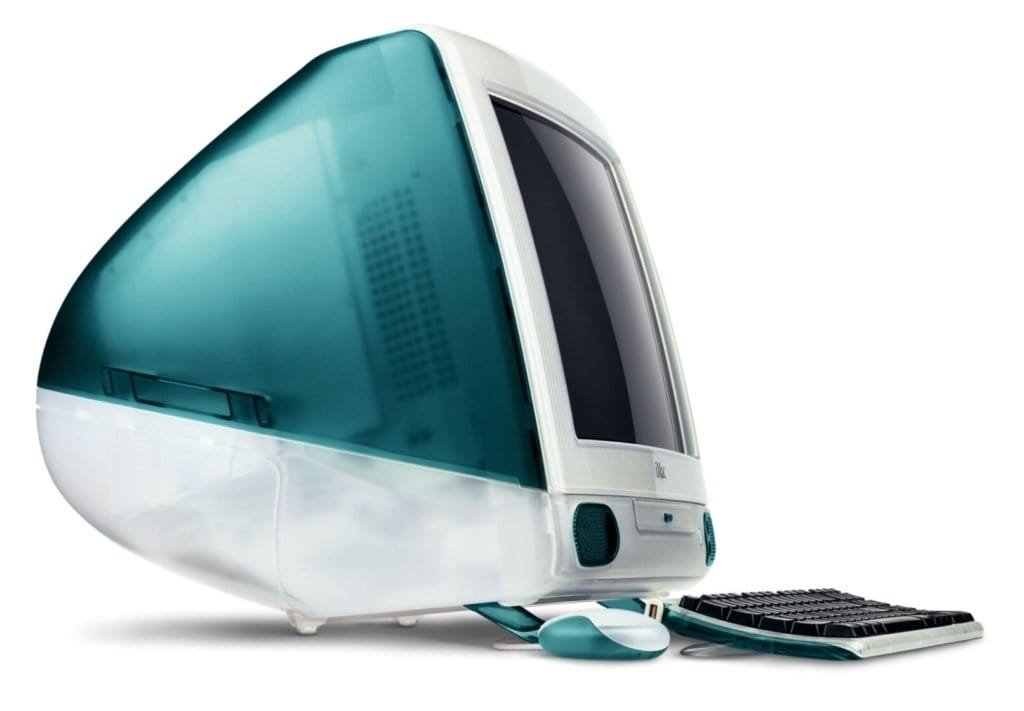In the ever-evolving landscape of technology, certain products stand out not only for their functionality but also for their distinctive designs. One such product that left an indelible mark on Apple’s history is the Apple USB Mouse, affectionately known as the “Hockey Puck.” Unveiled on May 6, 1998, this pointing device was a key accessory for the iMac computer, showcasing a unique round design that would spark conversations and debates among users for years to come.
Apple’s decision to introduce the Apple USB Mouse was strategic, aligning it with the release of the original iMac computer. The mouse boasted a USB connection, a notable upgrade from its predecessors, making it more user-friendly and compatible. The initial launch featured a single translucent “Bondi Blue” color, mirroring the iMac’s aesthetics. As Apple continued to innovate, they expanded the color options to include Blueberry, Strawberry, Grape, Lime, Tangerine, and Graphite, aligning each variant with the iMac’s G3 color options.
What set the Apple USB Mouse (iMac G3 Mouse) apart was its iconic “Hockey puck” design. Unlike its predecessor, the Mouse II, the new mouse adopted a circular shape with a single button situated at the top, following Apple’s design language. The circular design, although distinctive, garnered mixed reviews due to its small size and a tendency to rotate during use. A later version attempted to address this flaw by incorporating an indentation on the button, providing users with a clear reference point.

While the Apple USB Mouse gained popularity, it wasn’t without its flaws. A notable drawback shared with other Apple USB accessories was the unusually short cord. Originally designed for use through the integrated hub in Apple’s keyboards, the mouse faced challenges with Apple’s shift in notebook port placement from the center to the left edge. Despite these shortcomings, users appreciated the mouse’s functionality and design.
On July 19, 2000, Apple made a strategic move by discontinuing the Apple USB Mouse and introducing the Apple Pro Mouse. This marked the end of the “Hockey puck” era. The Pro Mouse addressed some of the design issues, featuring a more ergonomic shape and a longer cord. Although the Apple USB Mouse had a short stint in the market, its impact was lasting, contributing to Apple’s design evolution.
Even after 26 years, the round design of the original iMac Mouse, with its unconventional “Hockey puck” shape, remains a recognizable piece of Apple’s history. Despite its divisive nature among users, the design has become an enduring symbol of Apple’s commitment to pushing design boundaries. The Apple USB Mouse may have been a short-lived accessory, but its legacy lives on, etched into the memories of those who experienced the dawn of Apple’s iconic design language.
The Apple USB Mouse, with its distinctive “Hockey Puck” design, holds a special place in the chronicles of Apple’s product history. Beyond its functional aspects, this mouse serves as a testament to Apple’s bold approach to design innovation. As technology continues to advance, it’s essential to reflect on the products that paved the way for the sleek and modern devices we use today. The Apple USB Mouse may have been unconventional, but its impact on the tech world is undeniable, making it a true icon of its time.

iMac G3 Mouse Details
| Introduced | May 6, 1998 |
| Discontinued | July 19, 2000 |
| Model Number | M4848 |
| Original Price | Unknown |
| Colors | Bondi Blue Blueberry Strawberry Grape Lime Tangerine Graphite |
| Weight | Unknown |
| Dimensions | Unknown |
System Requirements
- Macintosh with USB port
- Mac OS 8.1 or later
iMac G3 Mouse
| Tracking | Mechanical |
| Buttons | 1 |
Connections
| Connection | USB 1.1 |
Power
| Power | USB |
Original iMac Mouse on Video
Further Reading and References
- Hockey puck mouse – Wikipedia
- Puck me! The Apple USB Mouse is a notable Apple fail. – VintageAppleMac
- Why People Couldn’t Stand Apple’s Hockey Puck Mouse – SlashGear
- Apple’s Mouse: A History – 512 Pixels
- An ode to the puck, Apple’s first USB mouse – The House of Moth
- Apple iMac G3 mouse, 1998 – Xahlee
Disclaimer: The data presented in this article is under continuous development and has been manually collected from various sources based on their availability. The author of this article may revise this dataset as additional research is conducted and reviewed. Please note that the information is provided “as is” and “as available” without express or implied warranties. The author cannot be held responsible for any omissions, inaccuracies, or errors in the published information. Any warranties relating to this information are hereby disclaimed.
Last updated: January 9, 2024
